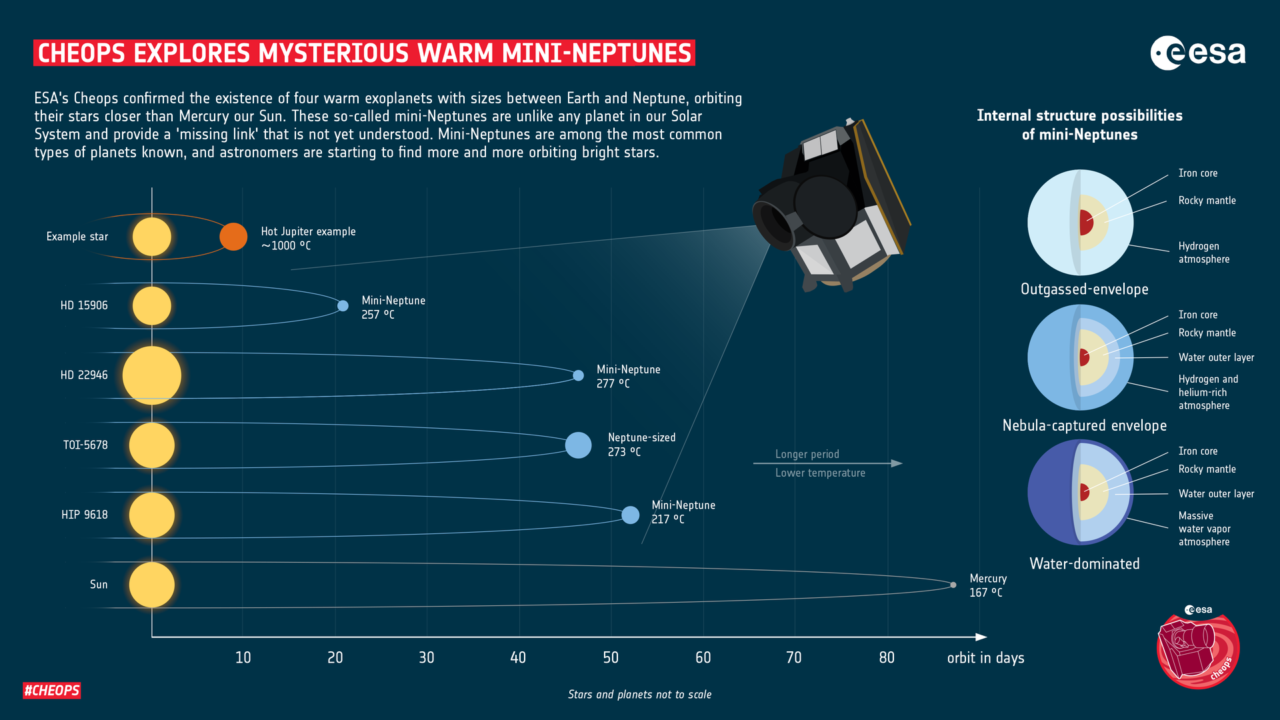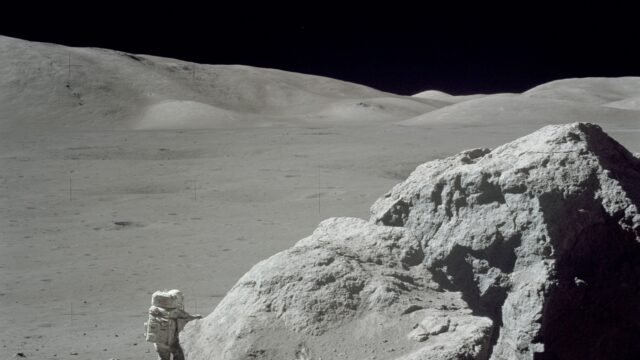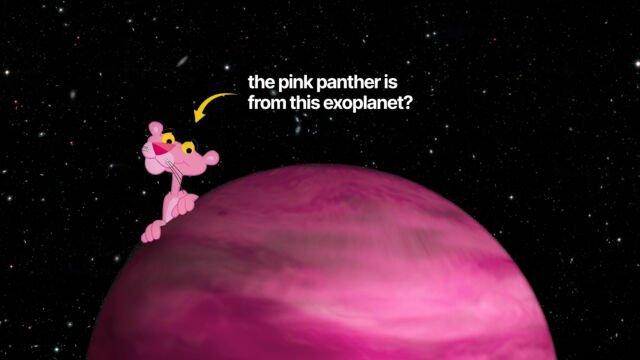European Space Agency’s CHaracterising ExOPlanet Satellite(CHEOPS), a spacecraft dedicated solely to studying bright, nearby stars that are already known to host exoplanets, has confirmed the existence of four warm Mini-Neptune exoplanets orbiting four different stars.
The exoplanets are in the sizes between Earth and Neptune, their orbit is closer than that of Mercury around our sun.
What are Mini-Neptunes?
Mini-Neptunes are one of the most common types of exoplanets known.
A Mini-Neptune is an exoplanet less massive than Neptune but resembling Neptune in that it has a thick hydrogen-helium atmosphere.
They are more difficult to find than Hot Jupiter exoplanets which are more common.
Mini-Neptunes are certainly very intriguing, as they are cooler in temperature(300 °C), smaller in size, and have longer orbits than a Mini-Jupiter exoplanet which has a surface temperature of more than 1000 °C and orbits its star in days if not hours.
How Were the Mini-Neptunes Discovered?
NASA’s Transiting Exoplanet Survey Satellite(TESS), a space telescope for NASA’s Explorer program, is designed to search for exoplanets using the transit method, first discovered the existence of these 4 exoplanets, however, it spent only 27 days on each star.
Upon revisiting, transits were detected, providing evidence of their existence.
What Is The Transit Method To Detect Exoplanets?
A method that measures the light curve of distant stars for periodic dips in brightness, these are the result of exoplanets passing in front of the star (i.e. transiting) relative to the observer.
Upon confirmation, CHEOPS was pointed at the stars when transit was expected, it successfully measured transit for each of these exoplanets which confirmed their existence and calculated their orbital period.
Characteristics of the Mini-Neptunes
The four different exoplanets orbit 4 different stars namely HD 15906, HD 22946, TOI- 5678, and HIP 9618

- The exoplanet orbiting HD 15906 – has a temperature of 257°C and an orbit period of 21 days
- A mini-Neptune exoplanet orbiting HD 22946 – a temperature of 277°C and an orbit period of ≈47 days.[1]
- A mercury-sized exoplanet orbiting TOI- 5678 – a temperature of 273°C and an orbit period of ≈47 days.[2]
- A mini-Neptune exoplanet orbiting HIP 9618 – a temperature of 217°C and an orbit period of 53 days.[3]
Understanding the composition of mini-Neptunes is important for knowing their formation.
Water-rich mini-Neptunes more likely originated in the distant icy regions of their planetary systems and then migrated inward.
On the other hand, mini-Neptunes composed of a mixture of rock and gas indicate that they formed in their current locations.
Multiple theories were stated when it comes to the composition of these exoplanets, although, all of them agree that it has an iron core, they debate on what its outer layer is made of.
Some astronomers theorize that it has a Hydrogen – helium atmosphere, and some theorize that it has an atmosphere of pure water vapor, while some other astronomers theorize that it has oceans of liquid water as its outer layer.
CHEOP’s measurement helped find the radius of these mini-Neptunes, and their mass can be found using the telescopes on the ground, by collecting both of these data, we can find its density, ultimately determining the mass of its iron core.
By determining the composition of these planets, we can find the mechanisms through which they were formed in early planetary systems.
This, in turn, deepens our understanding of the origins and evolution of our own Solar System.
References
- A Tuson et al., ‘TESS and CHEOPS discover two warm sub-Neptunes transiting the bright K-dwarf HD 15906’, Monthly Notices Of the Royal Astronomical Society, 8 June 2023, “We report the discovery of two warm sub-Neptunes transiting the bright (G = 9.5 mag) K-dwarf HD 15906 (TOI 461, TIC 4646810).”, https://academic.oup.com/mnras/article/523/2/3090/7191658?login=false[↩]
- S Ulmer-Moll et al., ‘TOI-5678b: A 48-day transiting Neptune-mass planet characterized with CHEOPS and HARPS’, Astronomy and Astrophysics, 8 June 2023, “A large sample of long-period giant planets has been discovered thanks to long-term radial velocity surveys, but only a few dozen of these planets have a precise radius measurement.”, https://www.aanda.org/articles/aa/full_html/2023/06/aa45478-22/aa45478-22.html[↩]
- HP Osborn et al., ‘Two warm Neptunes transiting HIP 9618 revealed by TESS and Cheops’, Monthly Notices Of the Royal Astronomical Society, 8 June 2023, “HIP 9618 (HD 12572, TOI-1471, TIC 306263608) is a bright (G = 9.0 mag) solar analogue.”, https://academic.oup.com/mnras/article/523/2/3069/7191657?login=false[↩]





